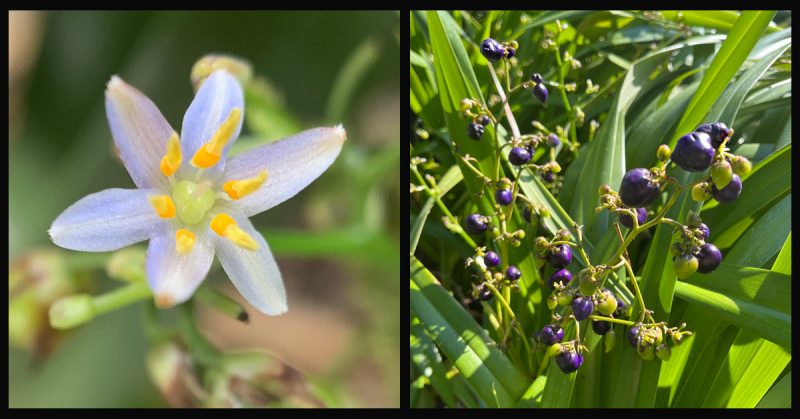Ulu Kanu: Dianella sandwicensis

Why ‘Uki‘uki?
When some people think of the month of May, they may start inadvertently humming a familiar tune and silently singing the lyrics, “May Day is Lei Day in Hawai‘i…”. Rightly so, as Chinatown is bustling, school children are getting ready for performances, and the fragrances of ‘awapuhi and pikake fill the air. However, not many people realize that there was a national holiday in the Kingdom of Hawai‘i that started on May 20, 1858. That holiday was to celebrate the birth of Prince Albert Edward Kauikeouli Kaleiopapa a Kamehameha.

He was the only son of Kamehameha IV and Queen Emma and was the last child born to a reigning monarch in Hawai‘i. To the people of the Kingdom, he was not only a sweet baby boy; he was their hope for the future. Called “Ka Haku o Hawai‘i” (The Lord of Hawai‘i), there were many celebrations held in his honor- with feasts, flags, and flowers abound. One of the Queen’s favorite flowers was the lily. There is actually a variety of lily (Crinum augustum) named for Queen Emma. However, the ‘uki‘uki is the only lily native to the islands. Although it’s more likely that an Easter lily or the like would have adorned the galas held for her son, this tiny, blue flower has always made me think of that beloved little prince. So May is dedicated to him.
More About ‘Uki‘uki
The flowers of this indigenous plant can actually range from pale blue to white. They have orange filaments and yellow anthers and bloom year round. The leaves range from approximately 12 to 40 inches long and are medium to dark green. They can be braided into cordage or used for thatching. The blue-purple fruits on some forms can be used as a pale purple-blue dye for kapa and other fabrics. They can also be eaten, but they’re not exactly delicious.
An interesting thing about this genus is that it is a taxonomic vagabond. It has gone through being part of the lily, daylily, xanthorrhoeaceae, and asphodelacea families. It gets its generic name from the Roman goddess Diana and the word “ella”, which is Latin for “small”. There are also three separate forms of the plant known, more than one of which may be native to the islands.
How To Grow It
Dianella can be grown fairly easily from seed when the berries have turned blue/purple and the flesh is squishy. You can separate the hard seeds or put them as is into a good potting soil and cover them lightly. Simply water as needed (not too much) to keep the soil moist. In a couple weeks, you’ll likely have shoots.
It can be grown in containers with part shade to full sun and outside as an accent plant or for ground cover. It can spread anywhere from 3 to 5 feet so makes an excellent understory with other ground covers and shrubs. ‘Uki‘uki has a wide range of watering requirements, so it is good to start with very thorough waterings and then back off after the plant shows new growth. It is also good to remove any brown leaves and spent flowering stalks when necessary and to divide clumps every now and then to maintain a nice landscape appearance. Unfortunately, the plant is prone to scales and mealy bugs, which is probably due to ants, but the problem can be treated by various methods such as manual cleaning with diluted soapy water.
Sources
Chase, H.L. (1860). Albert Kamehameha [Photograph]. Hawaii State Archives.
http://nativeplants.hawaii.edu/plant/view/Dianella_sandwicensis/
https://sites.google.com/a/hawaii.edu/ndnp-hawaii/Home/historical-feature-articles/prince-albert-kamehameha
